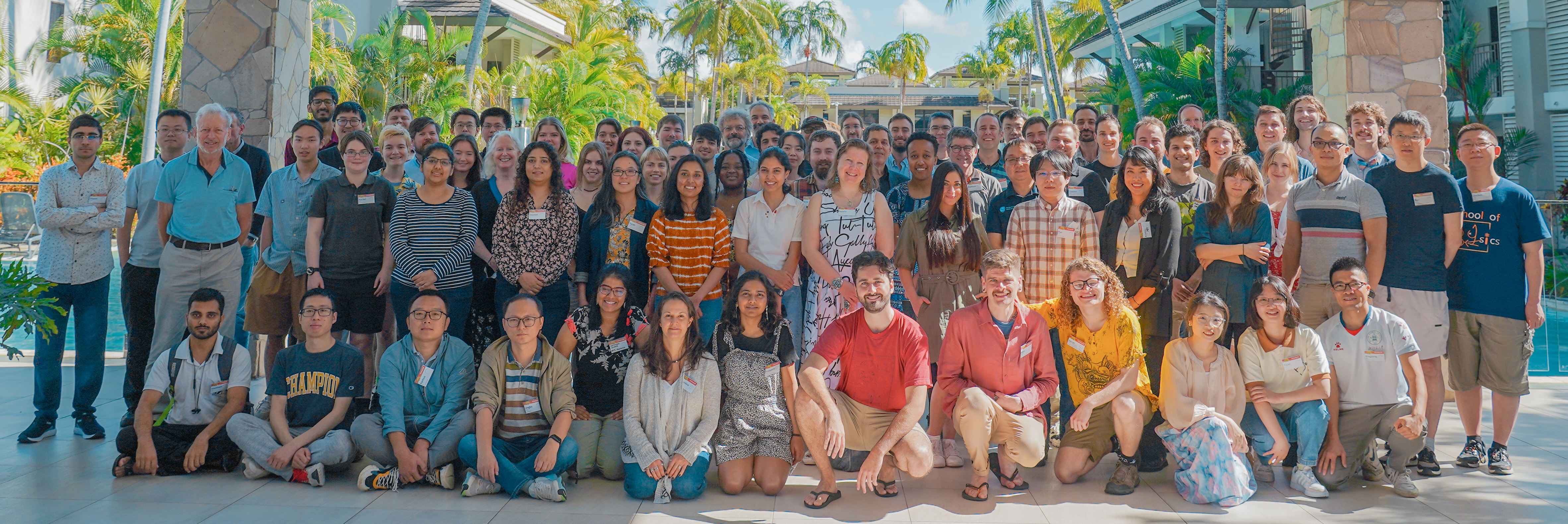A Global, Galactic-Scale Gravitational Wave Detector
 The
International Pulsar Timing Array (IPTA) is a consortium of
consortia[1]
, comprised of the European Pulsar Timing Array
(EPTA), the North American Nanohertz
Observatory for Gravitational Waves (NANOGrav), the
Indian Pulsar Timing Array Project (InPTA), and the
Parkes Pulsar Timing Array
(PPTA). The goal of the IPTA
is to detect and characterize the low-frequency gravitational
wave universe through
timing a global array of approximately 100 millisecond pulsars using the
largest radio telescopes in the world. Through sharing resources and creating
combined pulsar timing data sets, the IPTA is constructing the most sensitive
low-frequency gravitational wave detector possible. Sharing resources will
also help to reach other IPTA goals, for example, establishing a pulsar-based
reference timescale.
The
International Pulsar Timing Array (IPTA) is a consortium of
consortia[1]
, comprised of the European Pulsar Timing Array
(EPTA), the North American Nanohertz
Observatory for Gravitational Waves (NANOGrav), the
Indian Pulsar Timing Array Project (InPTA), and the
Parkes Pulsar Timing Array
(PPTA). The goal of the IPTA
is to detect and characterize the low-frequency gravitational
wave universe through
timing a global array of approximately 100 millisecond pulsars using the
largest radio telescopes in the world. Through sharing resources and creating
combined pulsar timing data sets, the IPTA is constructing the most sensitive
low-frequency gravitational wave detector possible. Sharing resources will
also help to reach other IPTA goals, for example, establishing a pulsar-based
reference timescale.
The experiment exploits the predictability the pulses from rapidly rotating neutron stars called millisecond pulsars (MSPs) and uses them as a system of Galactic clocks. Gravitational waves will cause changes in the travel times of pulses between pulsars and the Earth, detectable as perturbations in pulsar time-of-arrival measurements. Most importantly, this signature will show a characteristic sky correlation, predicted by Einstein’s theory of General Relativity, detectable by correlating the data from all of the pulsars in the array.
Participating Pulsar Timing Arrays
 The experiment is analogous to ground-based interferometric detectors such as LIGO and VIRGO, where the time-of-flight of a laser beam is measured along a particular path and compared to the time-of-flight along an orthogonally oriented path. Instead of the time-of-flight of a laser beam the IPTA is measuring the time-of-flight of an electromagnetic pulse from the pulsar. Instead of 4 km arms (as in the case of LIGO) the ‘arms’ of the IPTA are thousands of light-years (the distance between the pulsars and the earth). The total number of MSPs timed by the IPTA (and thus the number of ‘arms’ in the detector) is nearly 100. This number has grown dramatically over the past several years due to a coordinated world-wide effort to discover MSPs through large radio surveys.
The experiment is analogous to ground-based interferometric detectors such as LIGO and VIRGO, where the time-of-flight of a laser beam is measured along a particular path and compared to the time-of-flight along an orthogonally oriented path. Instead of the time-of-flight of a laser beam the IPTA is measuring the time-of-flight of an electromagnetic pulse from the pulsar. Instead of 4 km arms (as in the case of LIGO) the ‘arms’ of the IPTA are thousands of light-years (the distance between the pulsars and the earth). The total number of MSPs timed by the IPTA (and thus the number of ‘arms’ in the detector) is nearly 100. This number has grown dramatically over the past several years due to a coordinated world-wide effort to discover MSPs through large radio surveys.
These differences between the IPTA and the ground-based interferometers allow them to probe a completely different range in gravitational-wave frequency and thus a different category of sources. Whereas ground-based detectors have detected GWs with frequencies of 10–100 Hz from the mergers of stellar mass black holes, the IPTA will probe GW frequencies roughly 10 billion times smaller. Their primary source of gravitational waves is supermassive black-hole binaries (billions of solar masses), presumed to exist in plenty in the universe at the centers of galaxies, resulting from previous mergers of those galaxies. These studies will allow unique insights into the mechanics of galaxy formation and evolution, helping astronomers to construct a more complete picture of the history of the universe through cosmic time.
